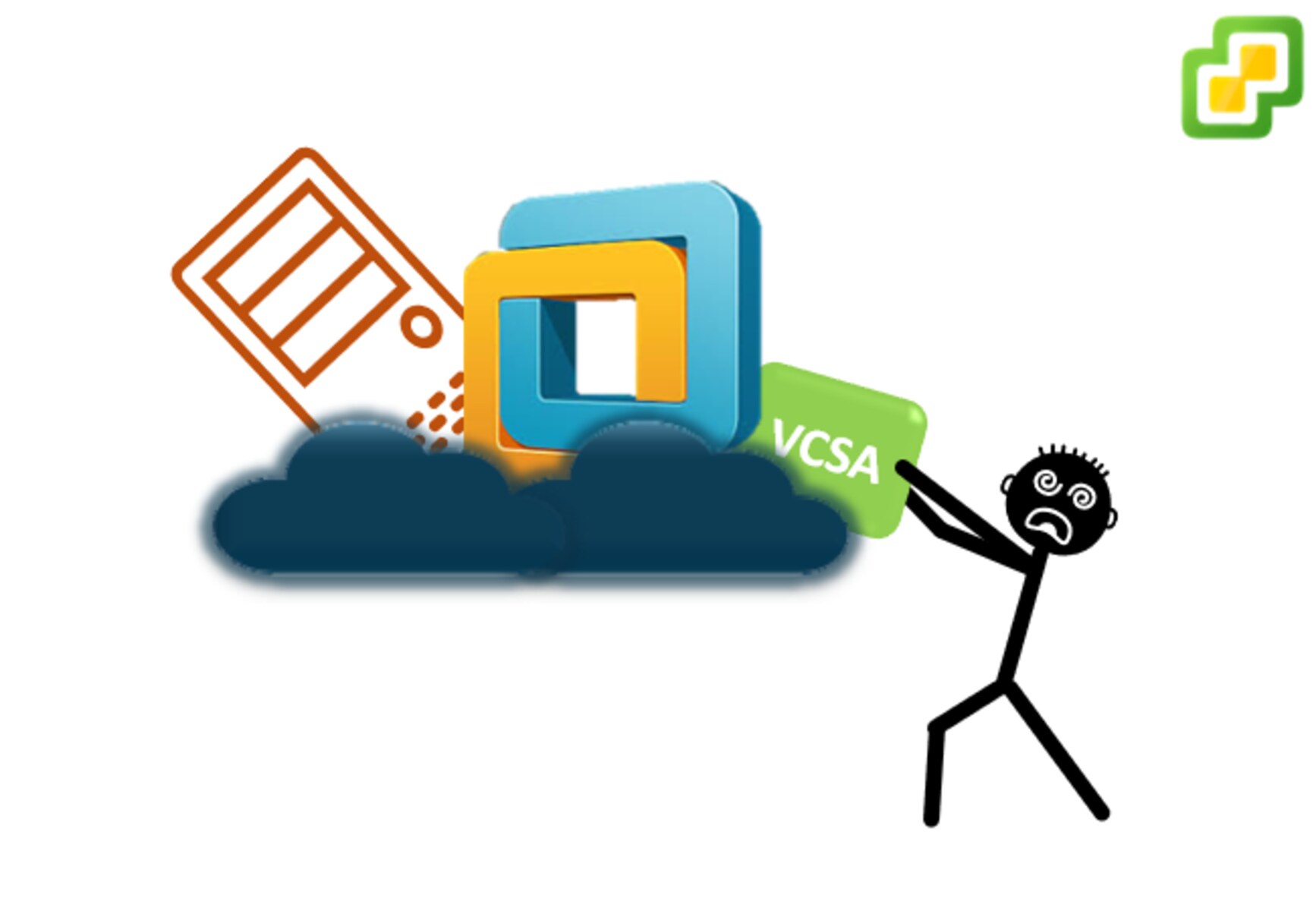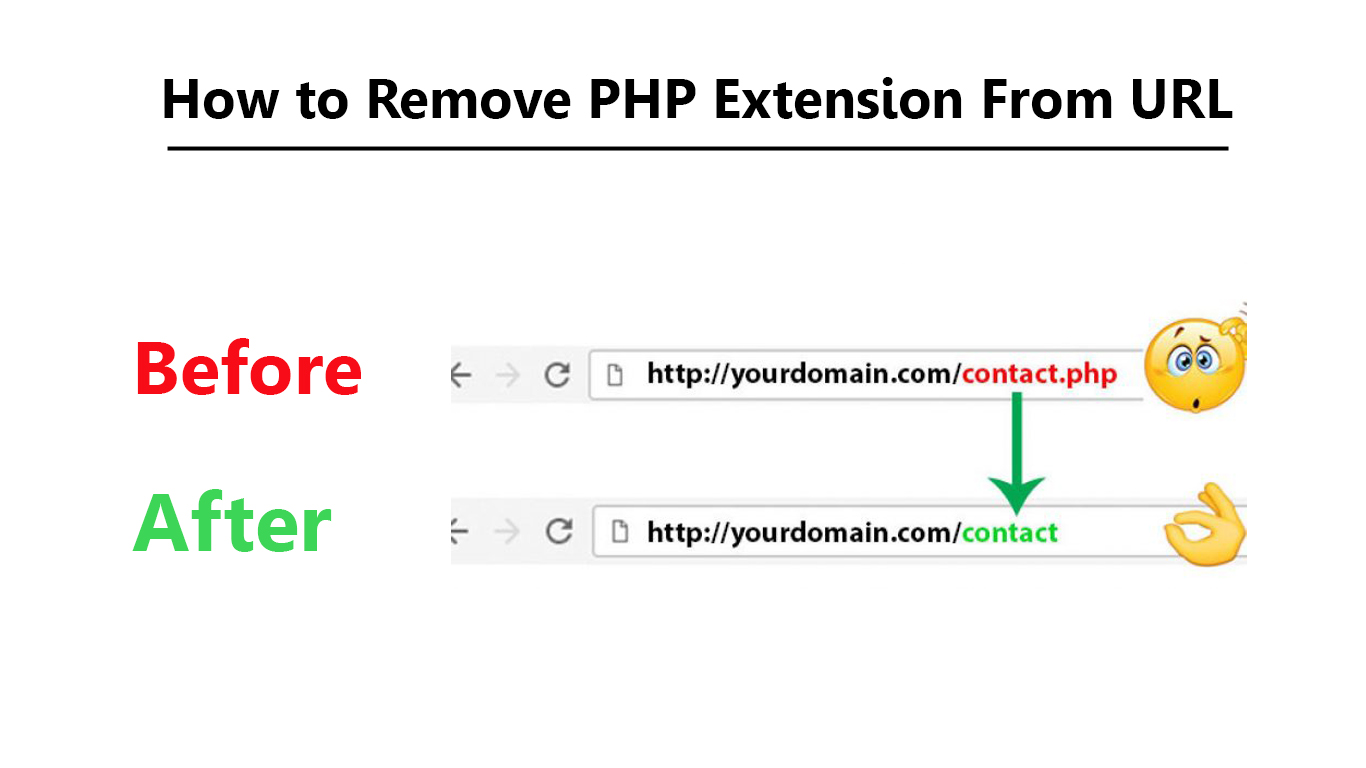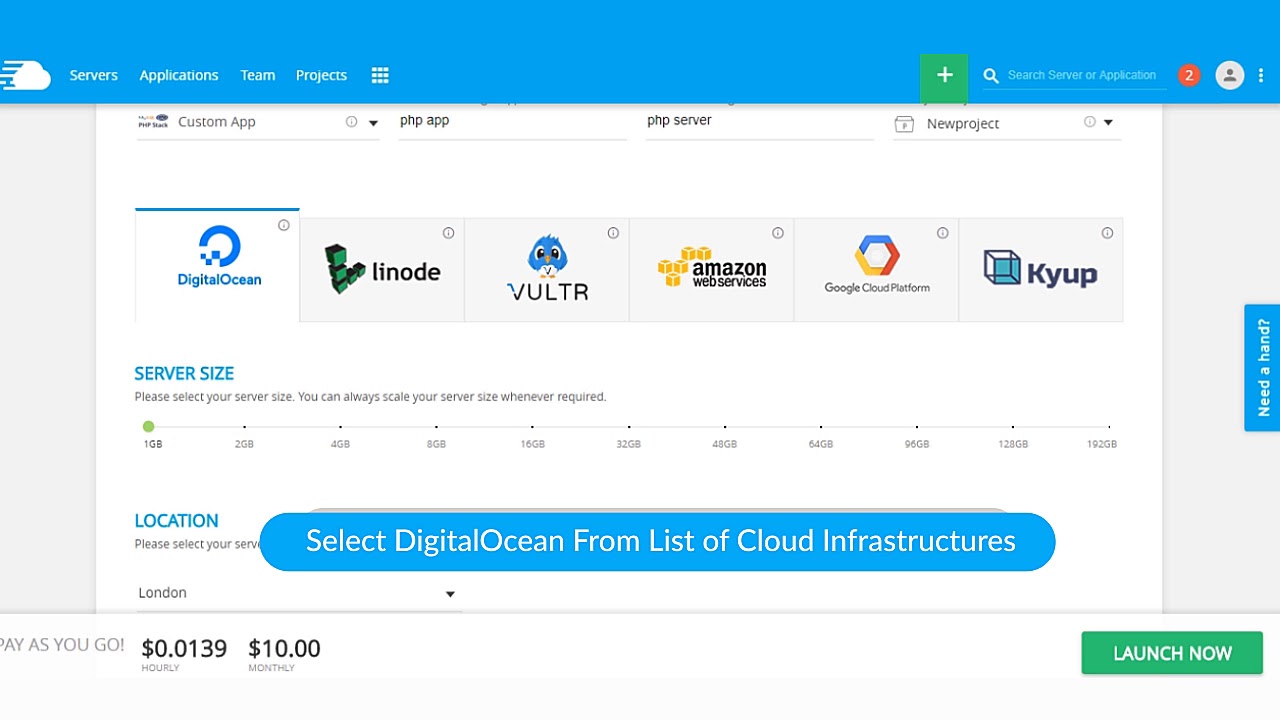Introduction
Welcome to the world of web hosting servers! In today’s digital age, having a reliable and efficient web hosting server is crucial for businesses and individuals looking to establish an online presence. While many people opt for third-party hosting providers, there is a growing trend of tech-savvy individuals and businesses choosing to create their own web hosting servers.
But what exactly is a web hosting server? In simple terms, it is a powerful computer connected to the internet that stores your website’s files, databases, and other important data. When a user types your website’s address into their browser, the server delivers the requested files and displays your website on their screen.
Creating your own web hosting server may seem like a daunting task at first, but it offers a myriad of benefits. One of the main reasons people choose to go this route is the level of control and customization it provides. By creating your own server, you have full control over its hardware, software, and security measures.
Another advantage is cost-effectiveness. While third-party hosting providers charge recurring fees, setting up your own server can be a one-time investment, with only minimal maintenance costs. Additionally, creating your own server allows for scalability, meaning you can easily upgrade the hardware or software as your website and business grow.
Before diving into the process of creating your own web hosting server, there are a few key factors to consider. The first is hardware. You’ll need to choose a server that meets your specific requirements in terms of storage capacity, processing power, and RAM. Additionally, selecting the right operating system and server software is crucial to ensure optimal performance and compatibility.
Furthermore, security should be a top priority. Protecting your server from potential cyber threats is essential, so implementing robust security measures and keeping your server up-to-date with the latest security patches is crucial.
In this article, we’ll guide you through the process of creating your own web hosting server, step by step. From choosing the right hardware to configuring the server settings, we’ve got you covered. So, strap in and get ready to embark on an exciting journey that will empower you with full control over your web hosting needs.
What is a web hosting server?
A web hosting server is a powerful computer that is dedicated to storing and serving websites to users who want to access them through the internet. When you create a website, all its files, databases, and other important data need to be stored on a server so that it can be accessed by visitors. In essence, a web hosting server acts as a storage facility for your website’s content.
When a user wants to visit your website, they simply type your domain name or website address into their web browser. The browser then sends a request to the web hosting server asking for the files necessary to display your website. The server receives this request and delivers the relevant files to the user’s browser, which then interprets and displays the website on their screen.
Web hosting servers come in various types and configurations, depending on the needs of the website and its expected traffic. There are shared hosting servers, where multiple websites are hosted on the same server, and dedicated hosting servers, where a single website gets the entire server’s resources. Additionally, there are virtual private servers (VPS) that offer a middle ground between shared and dedicated hosting.
Web hosting servers are typically equipped with high-performance hardware components to ensure fast and reliable delivery of website content. They have robust processors, ample RAM, and large storage capacities to handle the demands of hosting multiple websites simultaneously. Additionally, servers are connected to high-speed internet connections to ensure quick data transfer.
Moreover, web hosting servers also provide essential software and technologies to support various functions. They typically run operating systems like Linux or Windows, and have server software such as Apache or Nginx installed to handle website requests. Servers also support scripting languages like PHP or Python and database management systems like MySQL or PostgreSQL.
In summary, a web hosting server is an essential component of the online world, responsible for storing and serving website content to users. Without a web hosting server, it would be impossible for people to access websites and businesses to establish their online presence. By understanding the role and capabilities of a web hosting server, you can better appreciate the technical infrastructure that powers the internet and the websites we use every day.
Reasons to create your own web hosting server
Creating your own web hosting server instead of relying on third-party hosting providers offers a range of benefits and advantages. While it may require some technical knowledge and initial investment, the control and flexibility it provides can make it well worth the effort. Here are some compelling reasons to create your own web hosting server:
- Full control and customization: By creating your own web hosting server, you have complete control over its hardware, software, and configurations. This allows you to tailor the server to meet your specific requirements and optimize its performance for your website or applications.
- Cost-effectiveness: While third-party hosting providers charge recurring fees, setting up your own server can be a one-time investment with lower long-term costs. Additionally, as your website grows, you can choose to upgrade the hardware or software as needed, saving you from unnecessary expenses.
- Scalability: With your own web hosting server, you have the flexibility to scale according to your needs. As your website or business expands, you can easily upgrade the server’s resources, such as storage capacity, processing power, and RAM, to accommodate increased traffic and demand.
- Enhanced security: When you have full control over your web hosting server, you can implement robust security measures to protect your website and sensitive data. You can install and configure firewalls, encryption protocols, and regular security updates to safeguard against potential cyber threats.
- Faster website performance: By optimizing your own web hosting server, you can ensure faster website loading times and better overall performance. You have the flexibility to fine-tune server settings, optimize caching mechanisms, and allocate sufficient resources, resulting in a smoother and more responsive user experience.
- Support for custom applications: Creating your own server allows you to install and run custom applications or software that may not be supported by standard hosting providers. This is particularly beneficial for developers or businesses that require specific technologies or configurations for their websites or applications.
While creating your own web hosting server requires technical knowledge and ongoing maintenance, the advantages it offers in terms of control, cost-effectiveness, scalability, security, performance, and customization outweigh the challenges. Whether you’re a small business owner, a developer, or someone passionate about taking full control over your online presence, setting up your own web hosting server can be a rewarding endeavor that empowers you with complete autonomy and flexibility in managing your website or applications.
Things to consider before creating your own web hosting server
Creating your own web hosting server is an exciting venture that offers control and customization. However, before diving into the process, there are several important factors to consider. Taking the time to plan and prepare will help ensure a smooth and successful setup. Here are some key things to think about before creating your own web hosting server:
- Technical expertise: Setting up and managing a web hosting server requires technical know-how. Consider your level of expertise in areas such as server hardware, operating systems, networking, and security. If you lack experience, it may be beneficial to seek assistance from professionals or invest time in learning the necessary skills.
- Hardware requirements: Assess your website’s needs in terms of storage, processing power, and RAM. Determine the anticipated traffic and data requirements to choose hardware that can handle the demands. Ensure that your server has sufficient storage space to accommodate your website files, databases, and any future growth.
- Operating system: Select an operating system that aligns with your skillset and website requirements. Popular choices include Linux distributions like Ubuntu or CentOS, or Windows Server for compatibility with specific applications or technologies you plan to use.
- Server software: Consider the software you will need to install on your server. This includes web server software such as Apache or Nginx, database management systems like MySQL or PostgreSQL, and scripting languages like PHP or Python. Research and choose the software that best suits your website’s needs and your level of familiarity.
- Internet connection: A stable and fast internet connection is essential for your web hosting server. Ensure that your internet service provider offers reliable connectivity with adequate upload and download speeds. Consider using a dedicated internet connection or explore options for colocation in a data center for optimal stability and speed.
- Security measures: Implementing strong security measures is crucial to protect your web hosting server and the data it holds. Research and implement firewalls, intrusion detection systems, and regular security updates. Consider using secure protocols like HTTPS, implementing strong passwords, and monitoring for any unusual activity.
- Backup and disaster recovery: Plan for backup solutions to protect your data in the event of hardware failure, accidental deletion, or cyber-attacks. Regularly back up your website files, databases, and configurations to an external location. Additionally, consider implementing a disaster recovery plan to quickly restore your server in case of unforeseen events.
- Technical support: Evaluate your need for technical support. Determine whether you have the expertise to troubleshoot and resolve server issues on your own or if you require assistance. Consider joining online communities or forums to seek guidance, or engage the services of a professional support provider.
By carefully considering these factors, you can set yourself up for success when creating your own web hosting server. It’s important to be realistic about your technical abilities and to plan accordingly. Taking the time to make informed decisions at the outset will save you time, effort, and potential headaches down the line.
Step 1: Choose the right hardware for your server
Choosing the right hardware is a critical first step in creating your own web hosting server. The hardware you select will determine the performance, capacity, and scalability of your server. Consider the following factors to choose the hardware that meets your requirements:
- Processor: The processor, or CPU, is the brain of your server. It handles all the computations and tasks required to process incoming requests. Select a processor with sufficient processing power to handle the anticipated website traffic and workload. Look for the number of cores, clock speed, and cache size to determine its performance capabilities.
- RAM: Random Access Memory, or RAM, directly impacts the speed and responsiveness of your server. It stores temporary data that the server needs to access quickly. Consider the amount of RAM required based on your website’s resource demands and the number of concurrent connections you expect. More RAM allows for smoother multitasking and can handle higher traffic levels efficiently.
- Storage: Storage capacity is crucial for storing your website’s files, databases, and other data. Decide between hard disk drives (HDDs) or solid-state drives (SSDs). HDDs offer larger storage capacity at a lower cost, while SSDs provide faster read and write speeds, improving server performance. Consider your storage requirements and choose an appropriate configuration based on the capacity and performance needs.
- Network Interface: The network interface card (NIC) enables your server to connect to the internet. Look for a NIC that supports high-speed connections like gigabit Ethernet for fast data transfer. Consider whether you need multiple NICs for redundancy or separate network segments. Ensure that the NIC is compatible with your chosen server hardware and operating system.
- Redundancy and scalability: Evaluate your requirements for server redundancy and scalability. Redundancy ensures that if one component fails, another can seamlessly take over. Consider RAID arrays for redundant storage or redundant power supplies for continuous operation. Choose hardware that allows easy scalability, such as additional drive bays or expansion slots, to accommodate future growth.
- Power supply: Ensure that your server has a reliable power supply to prevent downtime. Select a power supply unit (PSU) with enough wattage to handle the power requirements of your server components. Consider a redundant power supply setup for added reliability. Additionally, invest in a quality uninterruptible power supply (UPS) to provide backup power in case of outages.
- Cooling and ventilation: To maintain optimal performance and prevent overheating, ensure your server has adequate cooling and ventilation. Choose a server case with proper airflow and consider adding extra fans or liquid cooling solutions if necessary. Pay attention to noise levels if the server will be housed in a shared environment.
- Budget: Determine your budget for server hardware. Balance your requirements with the available funds. Remember that investing in high-quality, reliable hardware is essential for long-term stability and performance.
Research and compare different hardware options, read reviews, and consider consulting with experts or experienced individuals to make an informed decision. Remember to account for not only your current needs but also future growth and scalability requirements. Choosing the right hardware will lay a solid foundation for building a powerful and reliable web hosting server.
Step 2: Select the operating system for your server
Choosing the right operating system (OS) is a crucial step in creating your own web hosting server. The OS will serve as the foundation for your server’s software and determine its compatibility, stability, and security. Consider the following factors when selecting the operating system:
- Familiarity and expertise: Consider your own level of familiarity and expertise with different operating systems. Opting for an OS that you are already familiar with can make the setup and management process smoother. If you have experience in working with a particular OS, it may be more efficient to choose that for your server.
- Websites and applications: Consider the websites and applications you plan to host on your server. Some applications or software may require specific operating systems to function properly. Ensure that the OS you choose is compatible with the software stack you need, such as web servers, scripting languages, and databases.
- Stability and security: Look for an operating system that provides stability and security for your server. Linux distributions like Ubuntu, CentOS, or Debian are popular choices for their stability and robust security features. Windows Server is another common option, especially if you require compatibility with specific Microsoft technologies.
- Community and support: Evaluate the community and support available for the operating system you are considering. Having an active and helpful community can be valuable when you encounter issues or need assistance. Look for reliable documentation, forums, and online resources that can provide guidance and troubleshooting support.
- Updates and compatibility: Regular updates and security patches are important to keep your server secure and up to date. Ensure that the operating system you choose has a track record of timely updates and long-term support. Verify its compatibility with your hardware, server software, and third-party applications you may use.
- Licensing considerations: Understand the licensing terms and costs associated with the operating system. Some operating systems, like Linux distributions, are open-source and free to use. Others, like Windows Server, may require purchasing a license. Consider your budget and the potential costs involved when choosing the operating system.
- User interface: Evaluate the user interface options provided by the operating system. Determine if you prefer a command-line interface (CLI) or a graphical user interface (GUI). Depending on your technical expertise and management preference, select an interface that meets your needs and allows you to efficiently configure and manage your server.
Take the time to research and compare different operating systems, consider their features and capabilities, and weigh them against your specific requirements. The operating system you choose will shape the functionality and performance of your web hosting server, so it’s important to make an informed decision. Remember, you can always consult with experts or seek guidance from the community to help make the right choice for your server.
Step 3: Install the necessary server software
After selecting the operating system for your server, the next step is to install the necessary server software. This software will enable your server to handle website requests, manage databases, and perform other vital functions. Here are the key software components you will need to install:
- Web server software: The web server software handles incoming requests from web browsers and delivers website content to users. The most popular options are Apache HTTP Server and Nginx. Choose the one that aligns with your requirements and familiarity with the software.
- Database management system: Install a database management system (DBMS) to store and manage data. Two popular DBMS choices are MySQL and PostgreSQL. Consider the specific data requirements of your website or applications to determine the most suitable option.
- Server-side scripting support: If your website or applications use server-side scripting languages like PHP or Python, you’ll need to install the relevant software. For PHP, you can install PHP-FPM (FastCGI Process Manager) or mod_php, depending on your web server choice. Python support can be added using the appropriate modules for your chosen web server.
- Content management system (CMS): If you plan to use a CMS like WordPress or Drupal, install the necessary software to support it. This typically includes PHP and a database management system. Follow the specific installation instructions provided by the CMS documentation.
- Email server software: If you want to set up email services on your server, consider installing email server software such as Postfix or Exim. These software packages handle the sending, receiving, and storing of email messages.
- Additional software: Depending on your specific requirements, you may need to install other software components. This could include caching systems like Memcached or Redis for improved performance, FTP server software for file transfer, or SSL/TLS software for secure communication.
When installing the server software, ensure that you follow the installation instructions specific to your chosen operating system and software versions. These instructions typically include downloading the software packages, configuring settings, and starting the necessary services.
It’s important to secure your server by implementing best practices and configuring security settings during the installation process. This includes setting up firewalls, enabling access controls, and ensuring that only necessary ports are open. Refer to the documentation and online resources for each software component to properly configure security measures.
After installation, test the functionality of each software component to ensure that it is working correctly and communicating with the other components. This will help identify and address any issues or conflicts that may arise.
Overall, the installation of necessary server software is a crucial step in setting up your web hosting server. Taking the time to properly install and configure these software components is essential for the smooth operation and performance of your server.
Step 4: Configure your server settings
Once you have installed the necessary server software, the next step in creating your own web hosting server is to configure the server settings. Properly configuring your server settings is crucial for optimal performance, security, and functionality. Here are some key areas to focus on:
- Network configuration: Configure your server’s network settings, including IP address, DNS settings, gateway, and subnet mask. Ensure that your server is connected to the network and has the necessary connectivity for both internal and external communication.
- Firewall configuration: Set up a firewall to control incoming and outgoing network traffic. Configure firewall rules to allow necessary traffic while blocking potential threats. Consider using a firewall software like iptables (for Linux) or enabling the built-in firewall features that come with your chosen operating system.
- Web server configuration: Configure your web server software to handle website requests and optimize its performance. Customize settings such as the document root directory, virtual hosts, and server-side scripting support. Adjust caching settings, compression, and HTTPS configurations for improved site speed and security.
- Database configuration: Configure your database management system (DBMS) to optimize its performance and security. Set up database users and permissions, fine-tune memory and cache settings, and configure backups and replication if needed.
- Security configuration: Implement robust security measures to protect your server and data. Set up secure logins using strong passwords or SSH keys. Adjust file permissions and access controls to restrict unauthorized access. Enable automatic security updates and regularly patch your server and software to protect against vulnerabilities.
- System monitoring and logging: Configure server monitoring tools to keep track of system performance, resource usage, and potential issues. Set up logging to record important events and errors for troubleshooting purposes. Consider using software like Nagios, Zabbix, or built-in monitoring tools provided by your operating system.
- Email and DNS configuration: If you have set up email services on your server, configure email server settings, including domain names, user accounts, and spam filters. Set up DNS records to ensure proper email delivery and domain resolution.
- Backup and recovery: Implement a regular backup strategy to protect your data. Configure automated backups of your website files, databases, server configurations, and any other critical data. Store backups securely in a remote location or utilize cloud backup services for added reliability.
It is important to consult the documentation and resources specific to the software and operating system you are using for detailed instructions on configuration settings. Additionally, consider employing best practices and industry standards for each aspect of server configuration to ensure a secure and optimized server environment.
Regularly review and update your server settings as needed. A well-configured server will not only provide efficient performance but also enhance the overall security and stability of your web hosting environment.
Step 5: Set up your domain and DNS
Setting up your domain and Domain Name System (DNS) is an essential step in creating your own web hosting server. The domain is the unique address that users will use to access your website, while DNS is responsible for translating human-readable domain names into machine-readable IP addresses. Here’s how to set up your domain and DNS:
- Register a domain: Choose a domain registrar and register a domain name for your website. Select a domain name that is concise, memorable, and relevant to your website or business. Follow the registration process, providing necessary information and completing any required payments.
- Obtain DNS hosting: DNS hosting is required to manage your domain’s DNS records. Choose a DNS hosting provider, which can be the same as your domain registrar or a separate service provider. Sign up for an account and configure the necessary DNS settings.
- Configure DNS records: Access your DNS hosting provider’s control panel or DNS management interface. Add DNS records such as A Records, CNAME Records, and MX Records to associate your domain with the IP address of your web hosting server. Configure other records like TXT or SPF as necessary for email delivery and domain verification.
- Set up DNS propagation: DNS changes typically take some time to propagate and become effective globally. This propagation period can range from a few minutes to several hours. Be patient and allow sufficient time for the changes to propagate before expecting your domain to resolve correctly.
- Verify DNS configuration: Use DNS lookup tools or online DNS propagation checkers to verify that your domain’s DNS records are correctly configured and propagated. Ensure that your domain resolves to the correct IP address of your web hosting server.
- Configure domain settings: Access your domain registrar’s control panel and configure domain settings such as nameservers, contact information, and privacy settings. Verify that your domain is set to use the correct DNS hosting provider’s nameservers.
- Set up email addresses: If you want to use custom email addresses with your domain, configure email settings in your DNS hosting account or web hosting control panel. Add MX Records pointing to your email server and set up the necessary email accounts and aliases.
- Secure your domain: Consider enabling DNSSEC (Domain Name System Security Extensions) for added security. DNSSEC ensures the integrity and authenticity of DNS data, protecting your domain from DNS spoofing or tampering.
Remember to save all documentation related to your domain and DNS setup, including login credentials, as these will be necessary for future management and updates.
It’s worth noting that DNS changes may take time to propagate worldwide, so be patient and allow for sufficient propagation time. During this period, you may experience intermittent access or inconsistencies in accessing your website across different locations.
By properly setting up your domain and DNS, you ensure that your website is accessible to users through a memorable domain name. Additionally, configuring your DNS accurately allows for efficient routing of web traffic to your web hosting server.
Step 6: Secure your server
Securing your server is of utmost importance to protect your data, your website, and the privacy of your users. Implementing robust security measures will help safeguard against potential threats and vulnerabilities. Here are some key steps to secure your server:
- Keep your server up to date: Regularly update your server’s operating system, web server software, database management system, and other critical components. Install security patches and updates promptly to ensure that known vulnerabilities are fixed and that you are using the latest secure versions.
- Enable a firewall: Protect your server by configuring a firewall to control incoming and outgoing network traffic. Set up rules to allow necessary services and block unauthorized access. Consider using a software firewall like iptables or the built-in firewall features provided by your operating system.
- Implement strong passwords and user access controls: Enforce a strong password policy for all user accounts on your server, including administrators, FTP users, and database users. Use a combination of alphanumeric characters, symbols, and mixed case. Limit user privileges and ensure that each user has access only to the resources they need.
- Enable secure connections: Configure your web server to use HTTPS and SSL/TLS certificates to encrypt communications between your server and users’ browsers. This is particularly important for transmitting sensitive data such as login credentials or payment information. Regularly update your SSL/TLS certificates to maintain a secure connection.
- Regularly backup your data: Implement a backup solution to periodically back up your server’s data, including website files, databases, and server configurations. Store backups securely in offsite locations or utilize cloud backup services. Regularly test your backups to ensure their integrity and ability to restore your server in case of data loss.
- Monitor server logs: Enable server logging and monitor logs regularly for any suspicious activities or error messages. Set up log monitoring tools that can alert you to any unusual or unauthorized access attempts, file modifications, or other security-related incidents.
- Use intrusion detection and prevention systems: Consider implementing intrusion detection and prevention systems (IDS/IPS) to detect and block unauthorized access attempts, network attacks, or malicious activities. These systems can help identify and respond to security threats in real-time.
- Regularly scan for vulnerabilities: Use vulnerability scanners to identify potential weaknesses in your server’s software or configurations. Regularly scan your server for vulnerabilities and promptly address any identified issues.
- Limit physical access: If your server is located in a physical environment, ensure that physical access is restricted to authorized personnel only. Keep your server in a secure location, such as a locked server room. Regularly audit and update access controls for physical access.
Remember, security is an ongoing process. Regularly review and update your security measures as new threats emerge and technologies evolve. Stay informed about the latest security best practices and keep yourself updated with industry news and alerts to proactively protect your server and data.
By securing your server, you not only protect your own assets but also establish trust with your users, ensuring the confidentiality, integrity, and availability of their data as they interact with your website or applications.
Step 7: Test and optimize your server’s performance
Testing and optimizing your server’s performance is essential to ensure that it can handle the expected traffic and deliver a fast and responsive experience to users. By taking the time to evaluate and fine-tune your server’s performance, you can identify any bottlenecks and optimize its configuration. Here’s how to test and optimize your server’s performance:
- Load testing: Conduct load tests to simulate high traffic scenarios and measure your server’s performance under stress. Use tools such as Apache JMeter or LoadRunner to send a significant number of requests to your server and analyze its response time and resource usage. This helps you identify potential performance issues and optimize your server accordingly.
- Monitor resource usage: Use server monitoring tools to continuously monitor the resource usage of your server. Keep an eye on CPU utilization, memory usage, disk I/O, and network traffic. Identify any spikes or consistently high resource usage and optimize your server’s configuration to allocate resources more effectively.
- Caching and content optimization: Implement caching mechanisms to improve the delivery of static content and reduce server load. Use tools like Varnish or caching plugins for your web server to store frequently accessed content in memory, resulting in faster response times. Optimize images, scripts, and CSS files to reduce file sizes and improve page load speed.
- Database optimization: Optimize your database’s performance by indexing frequently accessed fields, optimizing queries, and adjusting memory and cache settings. Regularly analyze and optimize database tables to eliminate unnecessary overhead and improve query execution speeds.
- Content Delivery Network (CDN): Consider using a CDN to distribute your website’s content across multiple servers globally. This helps in reducing latency and load times for users in different geographical locations. Configure your server to work seamlessly with the CDN provider of your choice.
- Monitor website speed: Regularly test your website’s speed using tools like Google PageSpeed Insights or GTmetrix. Identify any performance bottlenecks and follow the recommendations provided to optimize your website. Minimize HTTP requests, enable compression, and leverage browser caching to improve load times.
- Review and optimize configurations: Regularly review and optimize your server’s configurations. Evaluate resource allocations, adjust timeouts, and fine-tune caching settings based on the performance monitoring data and test results. Experiment with different configuration parameters to achieve optimal performance.
- Usability and user experience: Test your website or applications from a user’s perspective to ensure a smooth and intuitive experience. Validate links, check for broken functionality, and verify that page navigation flows smoothly. Optimize the user interface and user experience elements for faster and more efficient interactions.
Remember, performance optimization is an ongoing process. Regularly monitor and analyze your server’s performance, implement necessary improvements, and test again to ensure continued optimization. Keep up with the latest best practices and technologies to maintain a high-performing server environment.
By testing and optimizing your server’s performance, you can deliver a seamless user experience, improve your website’s search engine ranking, and maximize the efficiency of your server’s resources.
Conclusion
Congratulations! You have successfully navigated through the process of creating your own web hosting server. By following the steps outlined in this guide, you have gained greater control, customization, and flexibility in managing your online presence. Let’s recap the key points:
Starting with understanding what a web hosting server is, you learned the reasons why creating your own server can be advantageous. We discussed the importance of carefully considering hardware requirements, selecting the right operating system, and installing necessary server software. You also learned how to configure server settings, set up your domain and DNS, and secure your server from potential threats.
In the final steps, we explored the significance of testing and optimizing your server’s performance. Load testing, monitoring resource usage, implementing caching mechanisms, and database optimization were among the techniques covered. We emphasized the importance of regularly reviewing and fine-tuning your configurations to maintain optimal performance.
Remember, the process of managing a web hosting server requires ongoing attention and continuous learning. Stay current with industry trends, security updates, and best practices to ensure a secure and high-performing server environment.
Creating your own web hosting server provides the opportunity to tailor it to your specific needs and gain complete control over your online presence. It offers cost-effectiveness, scalability, and the ability to run custom applications. By investing time and effort into the setup and ongoing maintenance of your server, you have laid a solid foundation for success.
As you embark on your journey with your own web hosting server, be sure to regularly monitor, update, and optimize your server to adapt to changing needs. Stay connected with online communities, forums, and resources to seek guidance and expand your knowledge.
Now, armed with the knowledge and skills gained from this guide, embrace the power and freedom of managing your own web hosting server. Best of luck as you embark on this exciting adventure!

























